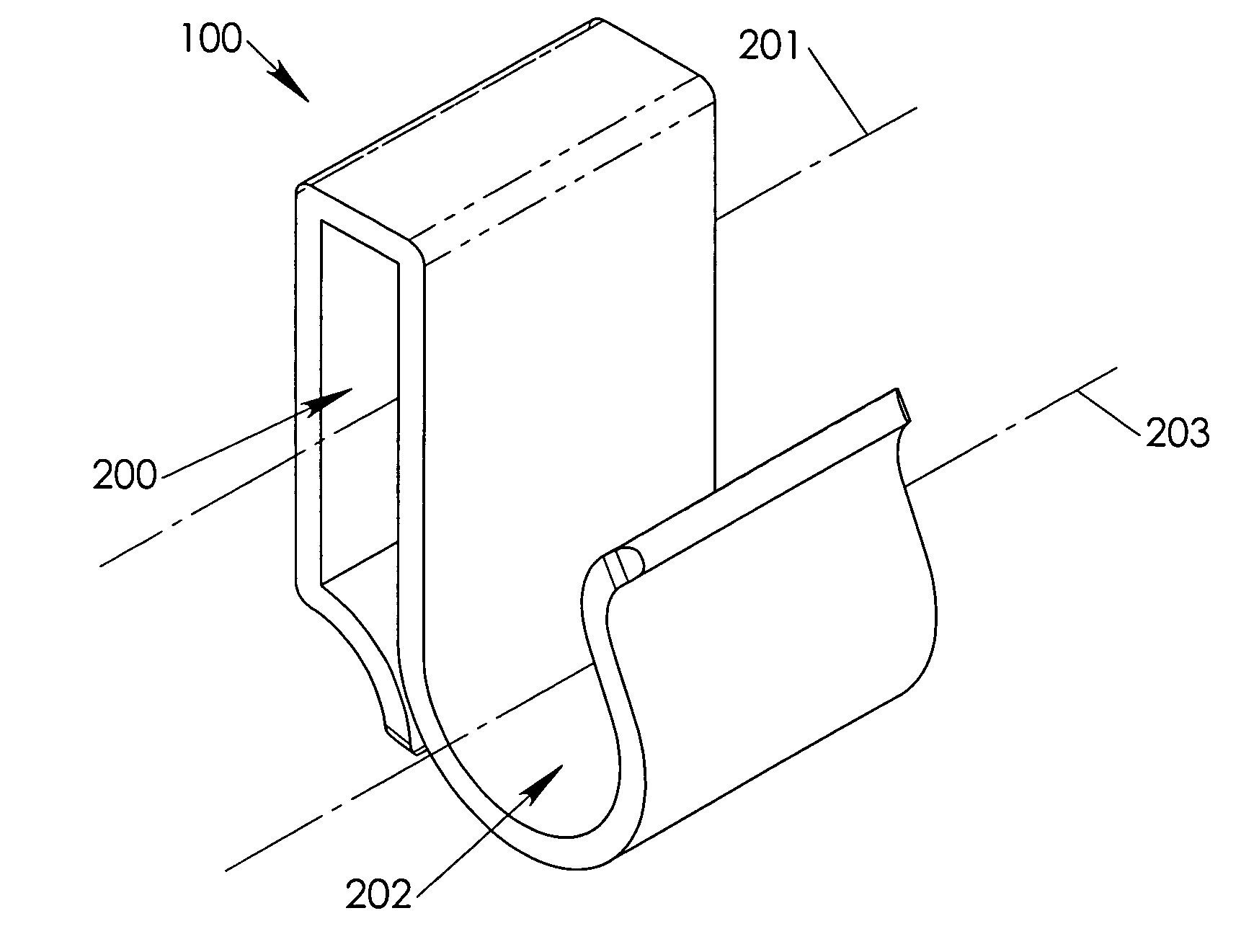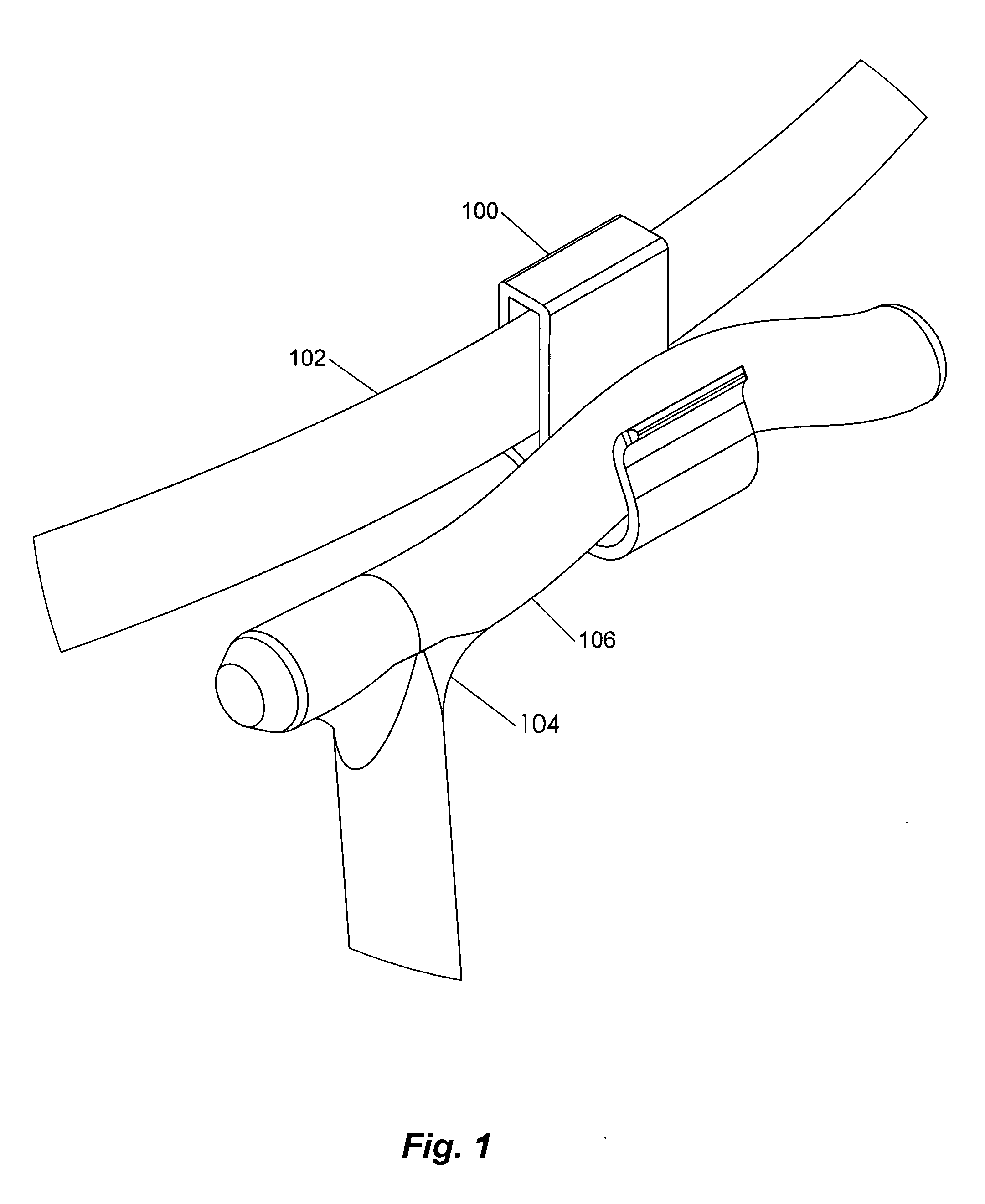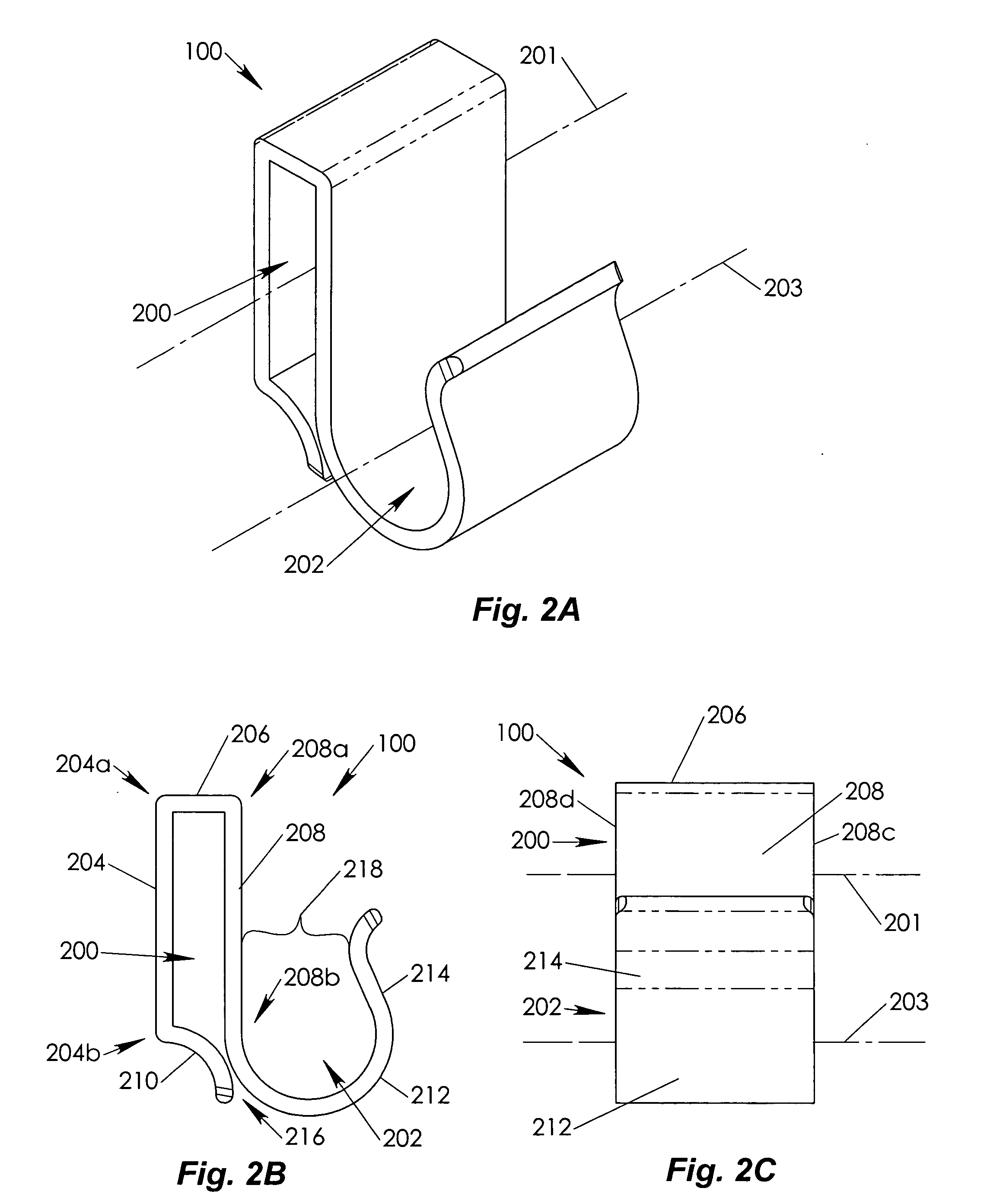Mobility aid retention clip
a technology for retaining clips and mobility aids, which is applied in the field of wheelchairs, walking sticks and staffs, can solve the problems of clumsy and inability to hold the wheelchair, the risk of dropping the wheelchair, and the frequent predicament of wheelchair users, and achieves the effect of convenient cleaning and sanitizing the wheelchair clip
- Summary
- Abstract
- Description
- Claims
- Application Information
AI Technical Summary
Benefits of technology
Problems solved by technology
Method used
Image
Examples
Embodiment Construction
[0033]The invention relates to a cane, walking stick, or staff retention clip. In the following description, numerous specific details are set forth in order to provide a more thorough description of the present invention. It will be apparent, however, to one skilled in the art, that the present invention may be practiced without these specific details. In other instances, well-known features and processes have been indicated although not described in detail so as not to obscure the invention.
[0034]Referring to the figures, FIG. 1 illustrates a retention clip 100 attached to a garment such as a waist band or belt 102 worn about the waist of an individual. A mobility aid 104 has a portion 106, such as a handle, secured within the retention clip 100. As used herein, the term “mobility aid” indicates a device such as a cane, walking stick, hiking staff, trekking pole, walking umbrella, or other item that a person would use to enhance personal mobility or involvement in various activiti...
PUM
 Login to View More
Login to View More Abstract
Description
Claims
Application Information
 Login to View More
Login to View More - R&D
- Intellectual Property
- Life Sciences
- Materials
- Tech Scout
- Unparalleled Data Quality
- Higher Quality Content
- 60% Fewer Hallucinations
Browse by: Latest US Patents, China's latest patents, Technical Efficacy Thesaurus, Application Domain, Technology Topic, Popular Technical Reports.
© 2025 PatSnap. All rights reserved.Legal|Privacy policy|Modern Slavery Act Transparency Statement|Sitemap|About US| Contact US: help@patsnap.com



